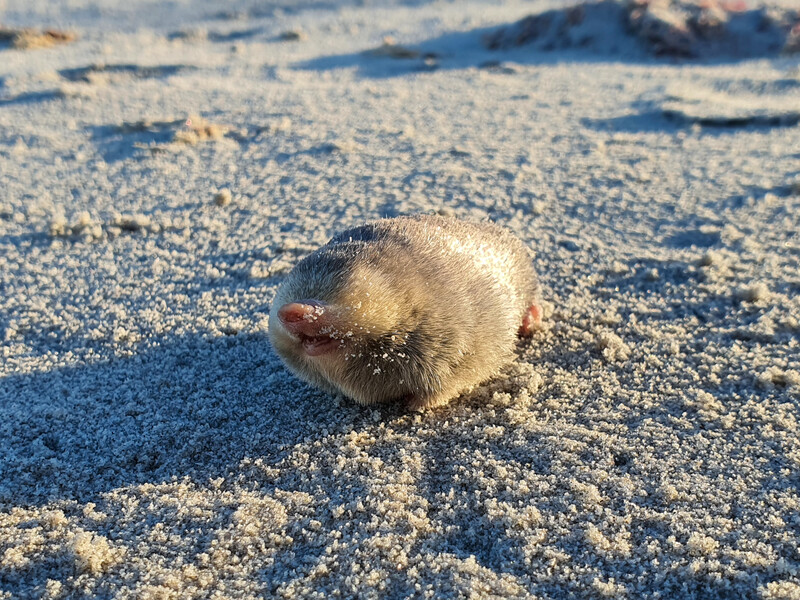
A blind golden mole that can swim through sand has been discovered in South Africa after being thought to be extinct for 87 years.
A group of experts from the Endangered Wildlife Trust (EWT) and the University of Pretoria used DNA and a sniffer dog in a two-year search. They rediscovered the De Winton’s golden mole in the sand dunes of northwest South Africa.
The rare De Winton’s golden mole hadn’t been seen since 1936. Before that, it was only found in a small area in Port Nolloth in the Northern Cape.
These creatures, about the size of a mouse or hamster, blend in with the sand due to their shimmering coat, making them hard to find. They live in burrows that are not easy to reach, leave few traces, and have sharp hearing that senses movements above ground, as reported by CNN.
Use of environmental DNA (eDNA) to detect blind mole
Scientists used a different method to find De Winton’s golden mole. Instead of looking for the mole itself, they relied on samples of environmental DNA (eDNA). This is the DNA that animals leave behind as they move, like skin cells, hair, or feces, according to the research paper published in the Biodiversity and Conservation journal.
Samantha Mynhardt, a conservation geneticist from the Endangered Wildlife Trust and Stellenbosch University, explained that getting DNA from soil has its challenges.
However, they were confident that if the golden mole was around, they could detect it by finding and studying its DNA.
A De Winton's golden mole, a blind mole with hyper-developed hearing, was photographed on South Africa's Port Nolloth Beach for the first time after 87 years of absence in the wilderness. pic.twitter.com/1AonH0GXOO
— China Science (@ChinaScience) November 29, 2023
In June 2021, the team went on an expedition. They checked up to 18 kilometers (11 miles) of dune habitat every day.
With the assistance of a skilled scent-detection dog named Jessie, they gathered over 100 soil samples from spots along the northwest coast where they sensed golden mole activity. Through this, they found out that various species of golden mole were in that area.
Experts had to wait one year to identify De Winton’s golden mole
The challenge was figuring out if one of the golden moles they found was the elusive De Winton’s golden mole. They could easily recognize common ones like the Cape golden mole and Grant’s golden mole.
However, they only had one reference DNA for De Winton’s golden mole, making it hard to be sure. They had to wait almost a year until a second gene sequence from a specimen in a Cape Town museum became available.
The team was overjoyed. Cobus Theron, senior conservation manager for EWT and a member of the search team, expressed his confidence by saying, “Though many people doubted that De Winton’s golden mole was still out there, I had good faith that the species had not yet gone extinct.”
See all the latest news from Greece and the world at Greekreporter.com. Contact our newsroom to report an update or send your story, photos and videos. Follow GR on Google News and subscribe here to our daily email!



